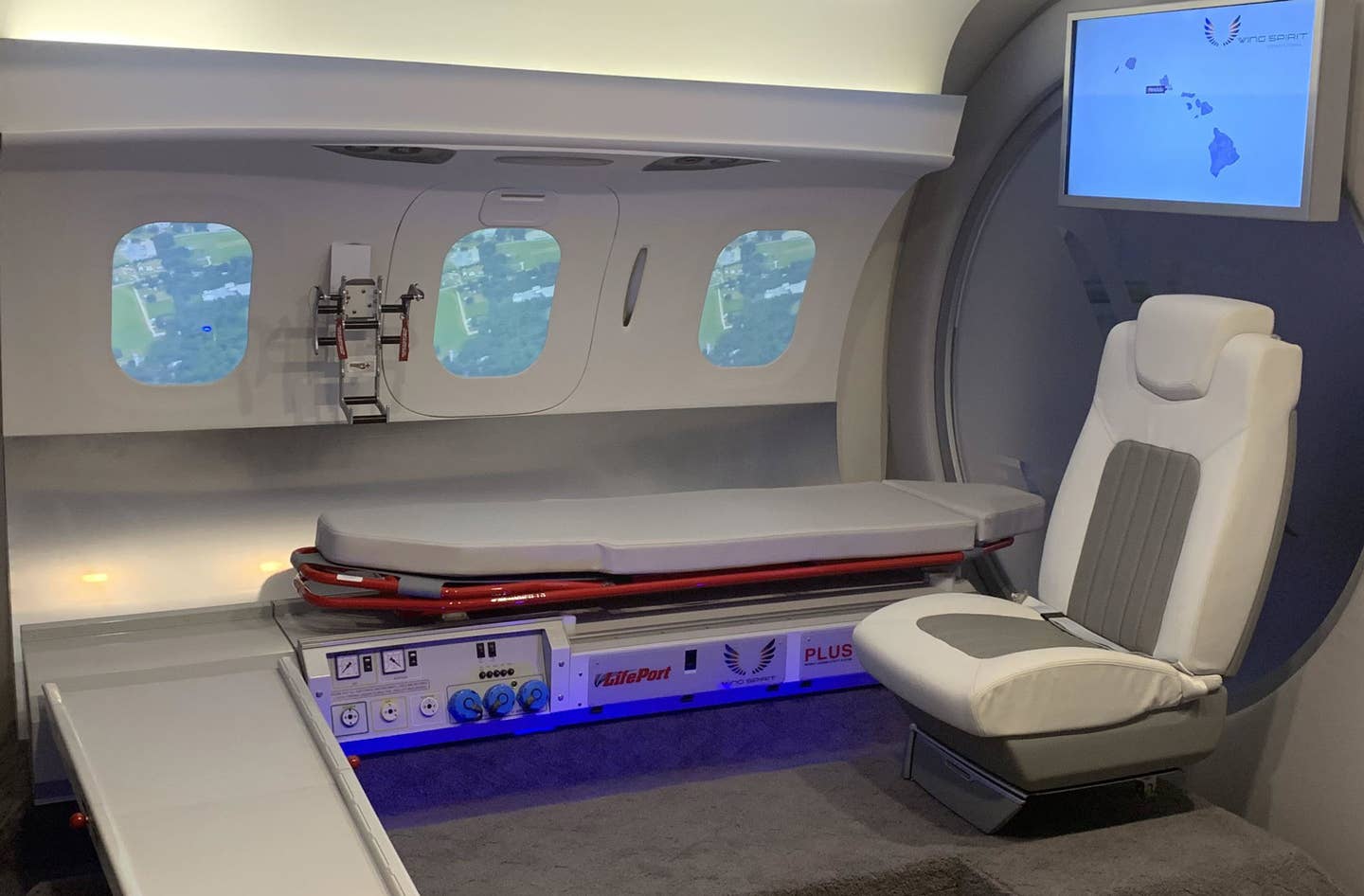
The mock-up of the medevac version of the HondaJet Elite is available on display at NBAA-BACE 2019. Honda Aircraft Company
Honda Aircraft Company introduced the medevac version of the HondaJet Elite, installed on an airplane operated by Wing Spirit in the Hawaiian Islands, at NBAA-BACE 2019. The modification demonstrates the potential variations in store for the jet as the model matures and its possible adaptation for special missions grows.
During the development of the original HondaJet, Michimasa Fujino, president and CEO of Honda Aircraft Company, understood that certain characteristics baked into the jet's design might be well-suited to sensitive passengers. In a conversation with Flying, Fujino describes in particular how the noise signature within the cabin would create a more comfortable environment for transporting patients. "When I design aircraft, I want to be sure that the fundamental aircraft design has a strong advantage compared to existing aircraft," says Fujino. "Speed, efficiency—those things an aircraft designer pays a lot of attention to—but not only those numbers. I was very finicky about cabin comfort. For example, [in] the HondaJet design, by mounting the engine over the wing, [the cabin] is really quiet, but not only quiet—we are also looking at the whole frequency range. Low frequency is directly related to fatigue, and high frequency is more annoying. It's hard to explain in a conversation, but if you fly the HondaJet for two hours, and if you fly another light jet for two hours, your body fatigue level is very different. So, I think this aircraft design can be used for other purposes, like medevac." He also discussed the opportunities to demonstrate the airplane's viability for organ transport, particularly in the Japanese market, where such operations face real challenges.
With the focus on sustainability a highlight of the NBAA-BACE 2019 convention, Honda Aircraft Company elected to join those who flew display aircraft into Las Vegas using sustainable aviation fuel. The company continues to expand its training footprint as well, with a second flight simulator for the HondaJet Elite under construction by FlightSafety International, and intended for deployment in Farnborourgh, United Kingdom. Honda anticipates the simulator to begin operations in April 2020—which is a good thing, as utilization of the current sim in Greensboro averages 20 hours a day.
As the fleet grows, the HondaJet service center network continues to grow, with the addition of a facility in Wilmington, Delaware, flyADVANCED—an FAA Part 145 repair station, Garmin dealer/service center, possessing mobile repair capability to dispatch to aircraft in the region.
Finally, during the company’s press conference, Fujino revealed that he had created a special paint scheme for customer (and actor) Tom Cruise. Designing a scheme that works well can be more complex than it appears, as Fujino noted. “Tom really wanted his own special paint scheme, and his request was very long. ‘Sexy, fast, sports car’—it took a month, but I enjoy designing things. Many aircraft designers are more like scholars, and they care about numbers and may not care about the aesthetic design.” The black stripe within Cruise’s design presented a challenge, as black paint on composite aircraft tends to concentrate heat and cause potential breakdown in the composite structure. “We created a special coating to prevent the black portion’s temperature [from exceeding those parameters.] So designing in paint is combining the technical knowledge and challenge. I think it’s very good to study for me.”

Sign-up for newsletters & special offers!
Get the latest FLYING stories & special offers delivered directly to your inbox






